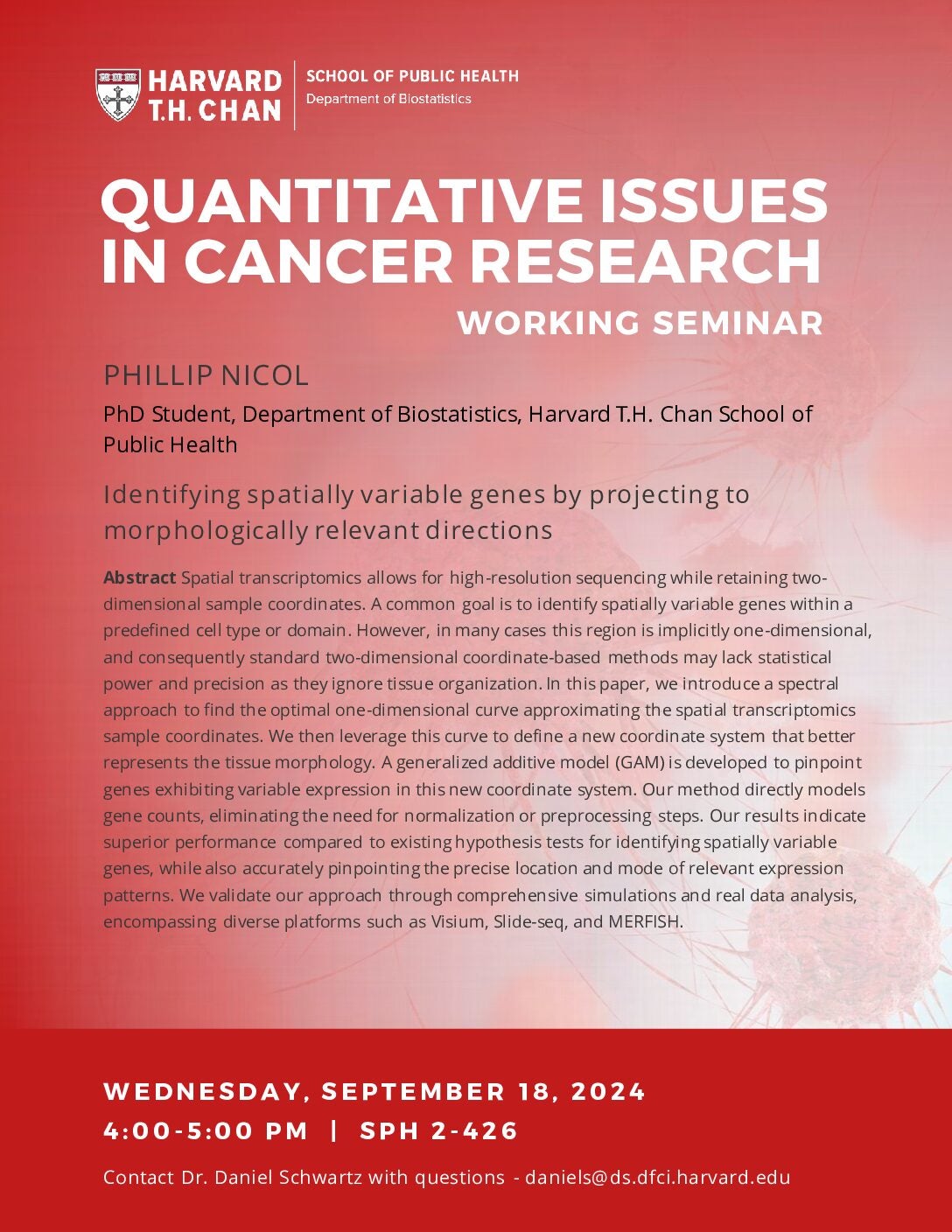
Quantitative Issues in Cancer Research Working Group Seminar

Phillip Nicol, PhD Candidate, Department of Biostatistics, Harvard University
Identifying spatially variable genes by projecting to morphologically relevant directions
Abstract: Spatial transcriptomics allows for high-resolution sequencing while retaining two-dimensional sample coordinates. A common goal is to identify spatially variable genes within a predefined cell type or domain. However, in many cases this region is implicitly one-dimensional, and consequently standard two-dimensional coordinate-based methods may lack statistical power and precision as they ignore tissue organization. In this paper, we introduce a spectral approach to find the optimal one-dimensional curve approximating the spatial transcriptomics sample coordinates. We then leverage this curve to define a new coordinate system that better represents the tissue morphology. A generalized additive model (GAM) is developed to pinpoint genes exhibiting variable expression in this new coordinate system. Our method directly models gene counts, eliminating the need for normalization or preprocessing steps. Our results indicate superior performance compared to existing hypothesis tests for identifying spatially variable genes, while also accurately pinpointing the precise location and mode of relevant expression patterns. We validate our approach through comprehensive simulations and real data analysis, encompassing diverse platforms such as Visium, Slide-seq, and MERFISH.
ⓘ Harvard Chan School hosts a diverse array of speakers, invited to share both scholarly research and personal perspectives. They do not speak for the School, and hosting them does not imply endorsement of their views, organizations, or employers.